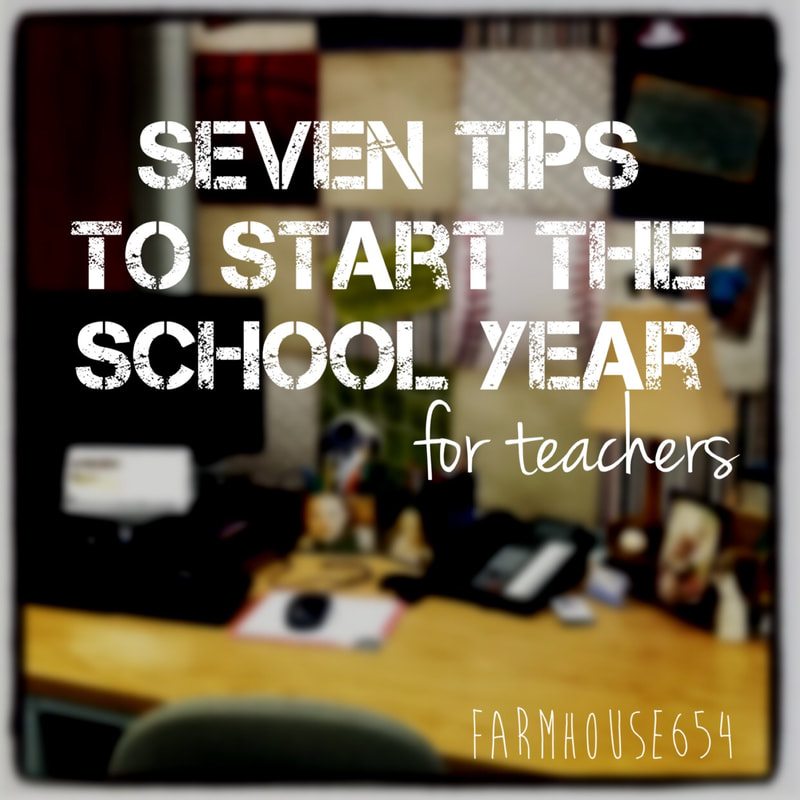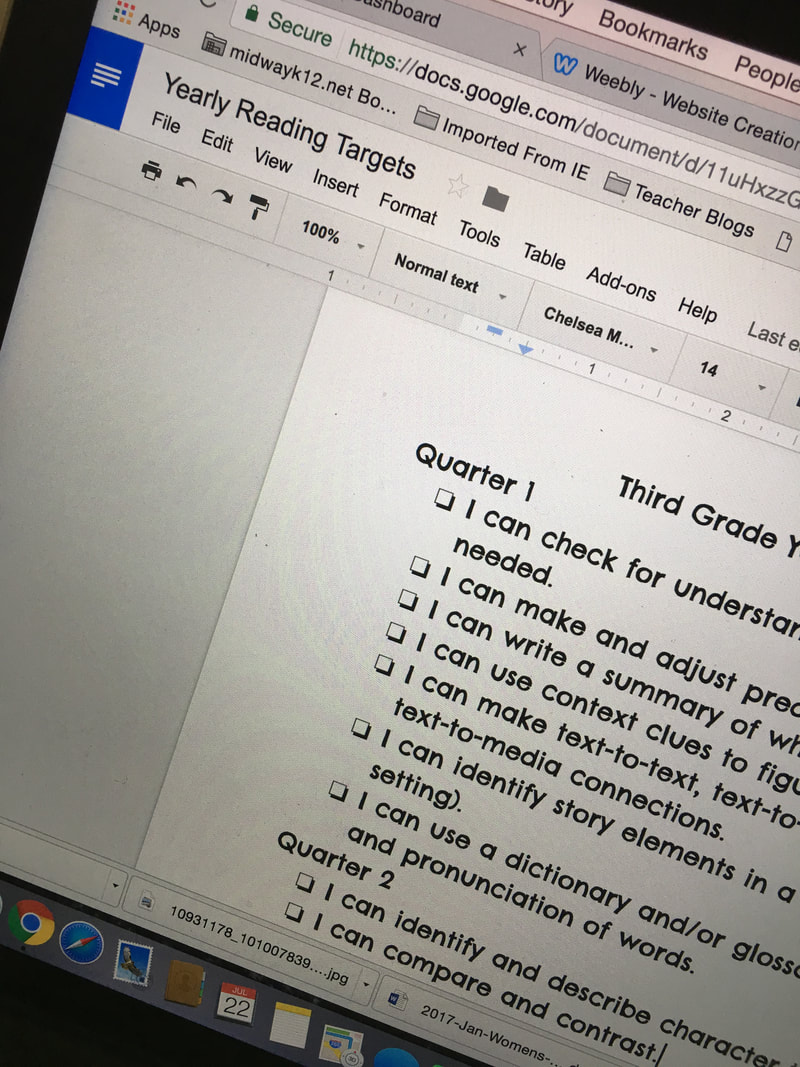|
This will be my 11th year walking into the same school district's doors in August. And every year, I feel overwhelmed when I step back into my classroom for the first time. I have had several new teachers ask me what I start with on that first day back in my room. I decided I would share the process of how I begin my school year, in hopes that it might help some first-year teachers...and maybe even some tips that would help veteran teachers to think about something a little bit differently!
So to get to the point of this post...here are the first three of seven tips to start the school year (for teachers). Parents...I'll get to a post for you soon! 1. Begin with the end in mind. I think so many new teachers try to take beginning of the year preparation day-by-day and hope that they end up at the result they are wanting by the time "Meet the Teacher Night" rolls around. I did this too, in my first few years. When you are overwhelmed by where and how to start, doing SOMEthing feels better than standing in the middle of your classroom looking around aimlessly at the mess you have created. The biggest thing that has helped me is to really think about your vision for your classroom before you start unpacking even one box. I have several thoughts & beliefs that really drive what I do in my classroom every day. Some of them include:
When I have these written out and in the back of my mind, I know that there are going specific places in my classroom that are very important to help make this vision a reality. For example, to create readers who love to read, my classroom library will need to be organized and inviting. It will need to have a place where students feel comfortable exploring the texts, reading for fun, and sharing book recommendations with their friends. My students will need to have time built in to our daily schedule to choose books, discuss books, and of course...read! To create young authors who feel comfortable sharing their stories, I will need to have writing supplies readily available, a way for them to track their story ideas, and a classroom community in which students encourage one another to share their stories and grow as writers. To meet individualized needs of the whole child, I will need to have my data binder organized and ready BEFORE I meet students. I need to know what I will track, how I will track it, and what I will do with the information I find. There are so many things that will need to be done before the first day of school, and writing my classroom vision out on paper always helps me to stay focused and to make sure I am staying true to why I became a teacher in the first place. 2. Think about Curriculum. After I know what I desire for my classroom to look like and to feel like, I always move on to curriculum. What we are asked to teach in a given school year is really the skeleton of the rest of our classroom life. I always used to put this step off until my classroom was mostly organized, then I would work on curricular goals the last few days before school started. Now I realize the huge mistake that was. Knowing what content needs to be taught in your classroom will help you to organize your space in a way that is conducive to sharing that content. So, when thinking about curriculum, here is what I do. Gather all standards for all subject areas. Here in Missouri, we use the Missouri Learning Standards. Start with one subject area. Math seems to be the easiest for me to start with, because it is very skill-driven. Go through the standards and begin to divide them up into what I want to teach during the first three quarters of the school year. I want to have all new content taught to my kiddos by the end of third quarter so we can use fourth quarter to review third grade content, prepare for state assessments, and begin to do some fourth grade prep work. Take each standard that you are covering during first quarter and turn them into specific measurable learning targets.
3. Think about Grading & Data.
Speaking of targets and tracking data, this is something else that I have learned to spend more time on at the beginning of my school year. Make sure you know what is expected of you, as far as reporting grades to parents, in your district. To be honest, our online grading system is great for tracking data on standards, but I often feel like there is more I want to share with parents. Because of this, I also keep a data notebook for my class to track other information. Some of the items that are included in my data notebook are:
I set this information up at the beginning of the year and have blank copies of each form in the notebook available for students who move into our district. I will share more about my data notebook forms in a few weeks, as I set up my own data notebook for the new school year. I hope that as you begin to think about the new school year, you can get just a few ideas from the way I start thinking about my school year. Later this week, I will talk about the last four tips for starting the school year. 4. Think about Classroom Management & Expectations. 5. Think about Parent Communication. 6. Think about your Classroom Library. 7. Finally...think about your Classroom Layout. I hope your Monday was a good one. Teachers, I hope that in the few weeks before the school year starts you'll be able to take time to picture the classroom of your dreams and use that vision to think about everything you can do to make that vision a reality. I can't believe it's already time to be thinking about the new school year. Time really does fly when you're having fun (or when you're moving...whichever phrase happens to fit in your life!). ❤️🏡❤️
0 Comments
Leave a Reply. |
Archives
January 2024
Categories
All
|




 RSS Feed
RSS Feed

